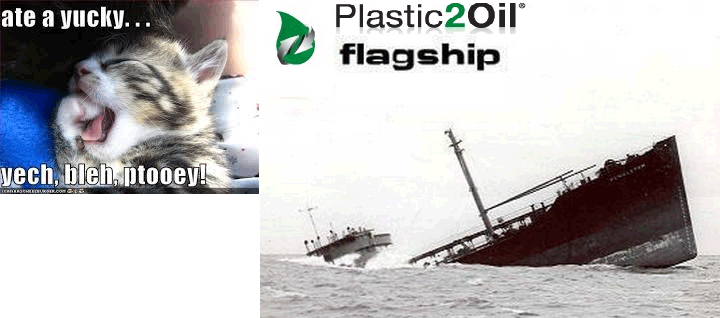5.2 Recommended Plastic Waste Management Practice
Post# of 43068

It is recommended that NYC consider the application of pyrolysis technologies in its management of NYC’s non-recycled MPW. Based on a preliminary comparison of the pyrolysis technologies examined in this study, JBI Inc.’s thermal catalytic pyrolysis technology appears to be the most advantageous. JBI Inc’s P2O process is a highly automated process that accepts a wide array of plastic waste and consistently yields high quality consumer-ready fuels. The P2O process generates approximately 4.4 barrels of oil per ton of plastic waste processed and is estimated to generate a net income of approximately $280 per ton of plastic waste.
JBI Inc’s P2O process is advantageous compared to the pyrolysis technologies of Agilyx and CGI because it has the highest operating capacity at a low footprint, it has the highest oil production yield, and it has the least environmental impacts. Furthermore, JBI Inc. is the only company that has managed to successfully recycle all of its light combustible gaseous products of pyrolysis for energy use in its process. This significantly reduces the overall external energy demand of the process as well as overall CO2 emissions. The P2O process is an economically competitive alternative to landfill disposal because it has a low total estimated cost and it generates a significant net income per ton of plastic waste processed.
JBI Inc’s P2O unit has a maximum operating capacity of 48 tons of plastic waste per day. Based on this capacity, JBI Inc. could easily handle the plastic residue tonnage from Sims material recovery facility (MRF), which is approximately 60 tons per day. It would take approximately 36 P2O units to process NYC’s total daily tonnage of municipal landfill-bound non-recycled plastics (NRP), which is approximately 1,700 tons per day (this tonnage includes Sims MRF plastic residue). The footprint of a single P2O unit is approximately 1,200 square ft. therefore an estimated minimum of 43,200 square ft. would be required to process all of NYC’s municipal NRP. The P2O process accepts film plastics, which account for approximately 60% of NYC’s municipal NRP.
In conclusion, pyrolysis is a favorable alternative to landfill disposal in the waste management of NYC’s non-recycled MPW. Unlike landfill disposal, pyrolysis taps into the material and energy resources of post-consumer waste and creates a market for materials that would otherwise be disposed. As landfill disposal becomes increasingly more expensive, pyrolysis becomes a more economically competitive alternative. Furthermore, pyrolysis has a less negative environmental impact than landfill disposal. Pyrolysis has not been widely applied in the field of waste management because of its drawbacks which include high external energy demand, high capital cost, and inconsistent product quality. JBI Inc.’s P2O process seems to have overcome these disadvantages because of its highly automated system and its ability to recycle its off- gas product for energy use. Therefore, JBI Inc.’s P2O process is a pyrolysis technology that should be seriously considered for application in NYC plastic waste management. It offers all the benefits of pyrolysis without any of the major drawbacks.
http://www.seas.columbia.edu/earth/wtert/sofo...h%2016.pdf
 (0)
(0) (0)
(0)Plastic2Oil, Inc. (PTOI) Stock Research Links
